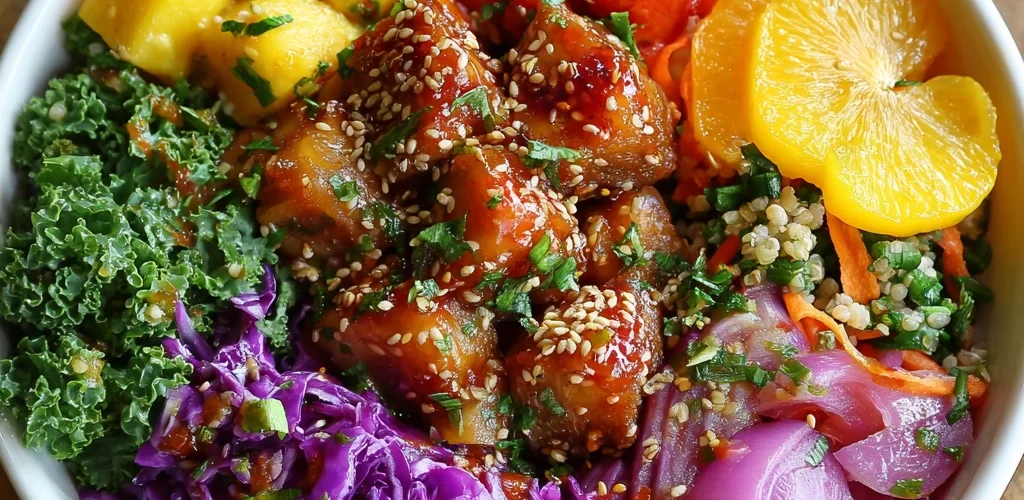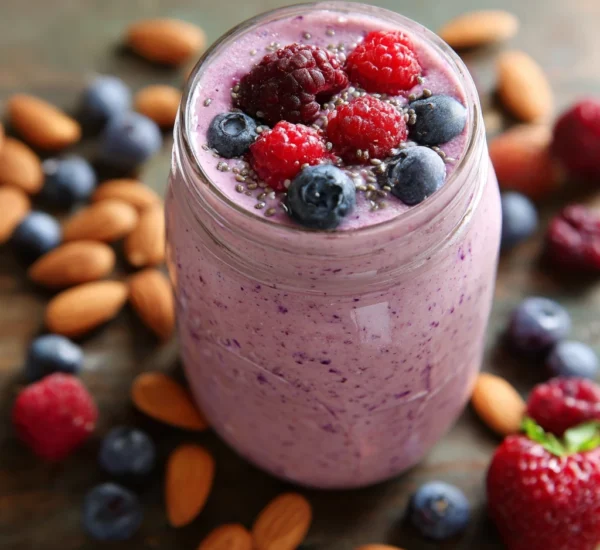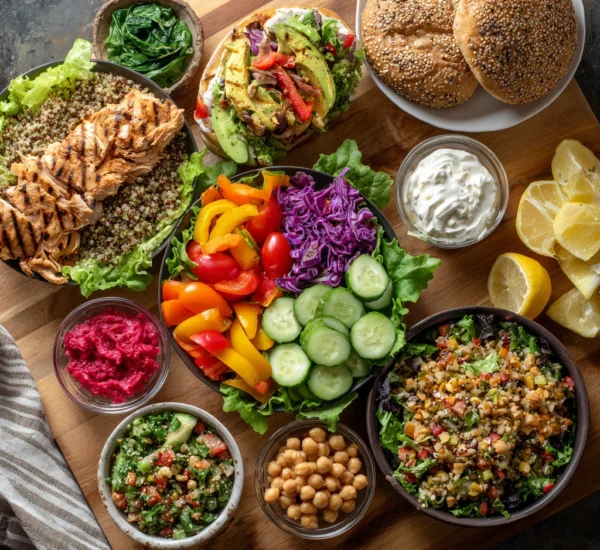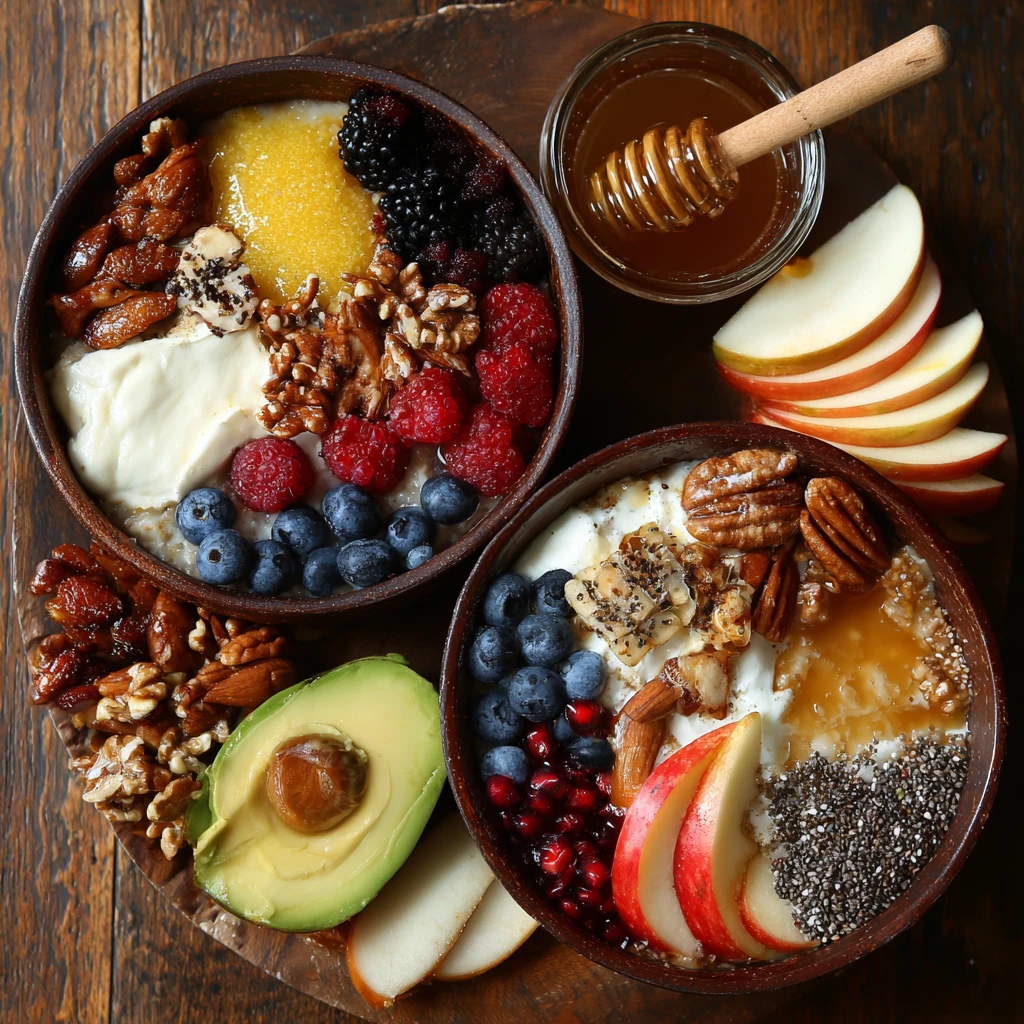Simple Steps to Make Your Meals More Vibrant
Food is more than just fuel; it’s an experience. Vibrant meals tantalize our senses, offering a feast for the eyes as well as the palate. But achieving culinary vibrancy doesn’t require Michelin-star skills. It’s about understanding simple techniques and incorporating strategic elements into your cooking. This guide explores straightforward ways to transform everyday meals into visually appealing and deeply satisfying creations.
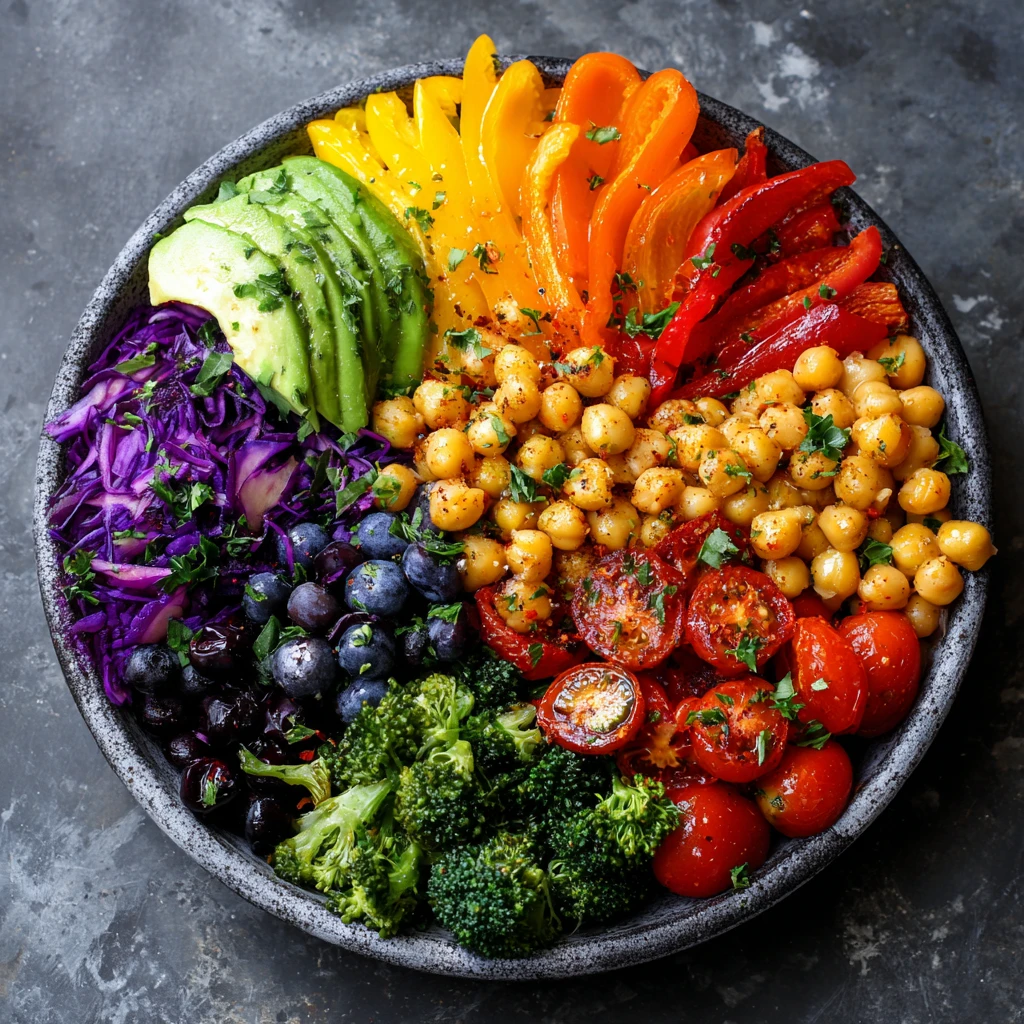
I. The Power of Color: Building a Colorful Plate
One of the easiest ways to enhance the vibrancy of your meals is by incorporating a diverse range of colors. Think of your plate as a canvas and aim to create a balanced and visually appealing composition.
A. Embracing the Rainbow: Fruits and Vegetables
Fruits and vegetables are your best friends when it comes to adding color. Each color group often indicates a unique set of nutrients, making a colorful plate not only visually appealing but also beneficial for your health.
- Red: Tomatoes, bell peppers, strawberries, and raspberries are rich in antioxidants like lycopene and anthocyanins.
- Orange and Yellow: Carrots, sweet potatoes, bell peppers, mangoes, and pineapple are excellent sources of Vitamin A and carotenoids.
- Green: Spinach, kale, broccoli, avocados, and green beans are packed with vitamins K, C, and folate.
- Blue and Purple: Blueberries, blackberries, eggplant, and purple cabbage are rich in antioxidants and anthocyanins, which are great for brain health.
- White and Brown: Onions, garlic, mushrooms, and cauliflower contribute unique flavors and textures, while also providing essential nutrients.
Experiment with different combinations of fruits and vegetables to find what works best for your tastes and dietary needs. Roasting vegetables can bring out their natural sweetness, while grilling adds a smoky char. Fresh herbs can amplify flavors and add a pop of green.
B. Beyond Produce: Colorful Grains and Proteins
While fruits and vegetables are the primary source of color, don’t overlook the vibrancy that can be found in grains and proteins.
- Grains: Quinoa comes in various colors, including white, red, and black, offering both visual appeal and nutritional benefits. Brown rice and wild rice provide earthy tones and nutty flavors.
- Proteins: Consider the color of your protein choices. Salmon offers a vibrant pink hue, while grilled chicken or tofu can be enhanced with colorful marinades or sauces. Lentils come in various colors, from red to brown, and can add depth to stews and soups.
Choosing ingredients with natural colors, even for staples like grains and proteins, contributes to a more visually appealing and exciting meal.
II. Texture and Contrast: Creating Dynamic Dishes
Vibrancy isn’t just about color; it’s also about texture. Contrasting textures create a more interesting and satisfying eating experience.
A. The Importance of Crunch: Adding Elements of Crispness
Adding a crunchy element to your meal can elevate it from ordinary to extraordinary. Consider these options:
- Toasted Nuts and Seeds: Sprinkle toasted almonds, walnuts, pecans, or pumpkin seeds on salads, yogurt, or oatmeal for a satisfying crunch and a boost of healthy fats.
- Crispy Vegetables: Roasting vegetables like Brussels sprouts, broccoli, or kale until they are crispy adds a delightful texture contrast to softer elements in your meal.
- Croutons: Homemade or store-bought croutons can add a crunchy topping to soups and salads.
- Crispy Chickpeas: Roast chickpeas with spices until they are crispy for a protein-packed and flavorful snack or salad topping.
B. Softness and Smoothness: Balancing the Plate
Balancing the crunch with elements of softness and smoothness is crucial.
- Creamy Sauces: A drizzle of creamy avocado dressing, hummus, or a yogurt-based sauce can add a luxurious texture to your meal.
- Soft Cheeses: Crumbled feta, goat cheese, or ricotta can add a tangy and creamy element.
- Cooked Grains: Fluffy quinoa, rice, or couscous provides a soft base for other ingredients.
- Mashed Vegetables: Mashed sweet potatoes, cauliflower, or butternut squash offers a smooth and comforting texture.
Experiment with different combinations of textures to find what you enjoy most. The interplay of crunchy, soft, and smooth elements creates a more engaging and satisfying culinary experience.
III. Flavor Profiles: Layering Flavors for Complexity
Vibrant meals are not only visually appealing but also packed with flavor. Layering different flavors creates a more complex and satisfying culinary experience.
A. Sweet, Sour, Salty, Bitter, and Umami: The Five Basic Tastes
Understanding the five basic tastes – sweet, sour, salty, bitter, and umami – is essential for creating balanced and flavorful meals.
- Sweet: Honey, maple syrup, fruits, and naturally sweet vegetables like carrots and sweet potatoes can add sweetness to your dishes.
- Sour: Lemon juice, vinegar, yogurt, and fermented foods like kimchi and sauerkraut provide acidity and tang.
- Salty: Salt, soy sauce, fish sauce, and olives add salinity and enhance other flavors.
- Bitter: Dark chocolate, coffee, leafy greens like kale and arugula, and citrus zest contribute bitterness and complexity.
- Umami: Mushrooms, tomatoes, seaweed, Parmesan cheese, and soy sauce provide a savory and meaty flavor.
Aim to incorporate a combination of these five tastes into your meals. For example, a salad with bitter greens, sweet berries, salty feta, and a tangy vinaigrette offers a balanced and flavorful experience.
B. Herbs and Spices: Adding Depth and Aroma
Herbs and spices are powerful tools for adding depth and aroma to your meals.
- Fresh Herbs: Basil, cilantro, mint, parsley, and rosemary can be added fresh or cooked to enhance the flavor of your dishes.
- Dried Spices: Cumin, coriander, paprika, turmeric, and chili powder can add warmth, spice, and complexity.
- Spice Blends: Experiment with different spice blends like curry powder, garam masala, or Italian seasoning for unique flavor combinations.
Don’t be afraid to experiment with different herbs and spices to find what you enjoy most. Start with small amounts and taste as you go. Toasting spices before adding them to your dish can enhance their flavor and aroma.
IV. Presentation Matters: Plating Techniques for Visual Appeal
The way you present your food can significantly impact your dining experience. Simple plating techniques can transform a simple meal into a visually appealing masterpiece.
A. Simple Plating Techniques: Elevating Your Dishes
- Height: Create height by stacking ingredients on top of each other. This adds visual interest and dimension to your plate.
- Garnish: Use fresh herbs, edible flowers, or a sprinkle of spices to garnish your dishes. This adds a pop of color and flavor.
- Sauce Drizzle: Drizzle sauces artfully over your dishes. This adds visual appeal and enhances the flavor.
- Negative Space: Leave some empty space on your plate. This allows the eye to focus on the food and creates a more elegant presentation.
B. Using the Right Tools: Plates, Bowls, and Utensils
The right tools can make all the difference in your plating presentation.
- Plates: Choose plates that complement the colors of your food. White plates are a classic choice that allows the food to shine, while colorful plates can add a touch of personality.
- Bowls: Use bowls of different shapes and sizes to create visual interest.
- Utensils: Choose utensils that are appropriate for the dish you are serving.
Experiment with different plating techniques and tools to find what works best for you. Remember that presentation is about enhancing the overall dining experience.
V. Putting it All Together: Creating Vibrant Meals
Now that you understand the key elements of creating vibrant meals, let’s put it all together. The following sections provide practical tips and examples for incorporating these techniques into your daily cooking.
A. Meal Planning with Vibrancy in Mind: A Practical Guide
Planning your meals with vibrancy in mind can make it easier to incorporate these techniques into your daily cooking.
- Start with Color: When planning your meals, think about the colors you want to include. Choose fruits and vegetables that are in season and that offer a variety of colors.
- Consider Texture: Think about the textures you want to incorporate. Do you want something crunchy, soft, or creamy?
- Layer Flavors: Plan to incorporate a combination of sweet, sour, salty, bitter, and umami flavors.
- Plan for Presentation: Think about how you will plate your meals. Choose the right plates, bowls, and utensils.
B. Recipes for Vibrant Meals: Inspiration for Your Kitchen
Here are a few recipe ideas to inspire you to create vibrant meals in your kitchen:
- Rainbow Salad: A salad with a variety of colorful fruits and vegetables, such as red tomatoes, orange carrots, yellow bell peppers, green spinach, and purple cabbage.
- Mediterranean Quinoa Bowl: A bowl with quinoa, roasted vegetables, chickpeas, feta cheese, and a lemon-herb dressing.
- Spicy Peanut Noodles: Noodles with peanut sauce, shredded carrots, red cabbage, and green onions.
- Black Bean Burgers: Burgers made with black beans, corn, red bell peppers, and spices. Serve on a whole-wheat bun with avocado and salsa.
C. Simple Swaps for Everyday Meals: Increasing Vibrancy Effortlessly
Here are some simple swaps you can make to increase the vibrancy of your everyday meals:
- Add fresh herbs to your salads and soups.
- Use colorful vegetables as a side dish.
- Sprinkle toasted nuts and seeds on your yogurt or oatmeal.
- Add a drizzle of creamy sauce to your dishes.
- Garnish your meals with edible flowers or a sprinkle of spices.
By incorporating these simple techniques and swaps into your cooking, you can transform everyday meals into visually appealing and deeply satisfying creations. Remember that cooking is a form of self-expression. Have fun experimenting with different ingredients, flavors, and textures to create meals that are both beautiful and delicious.
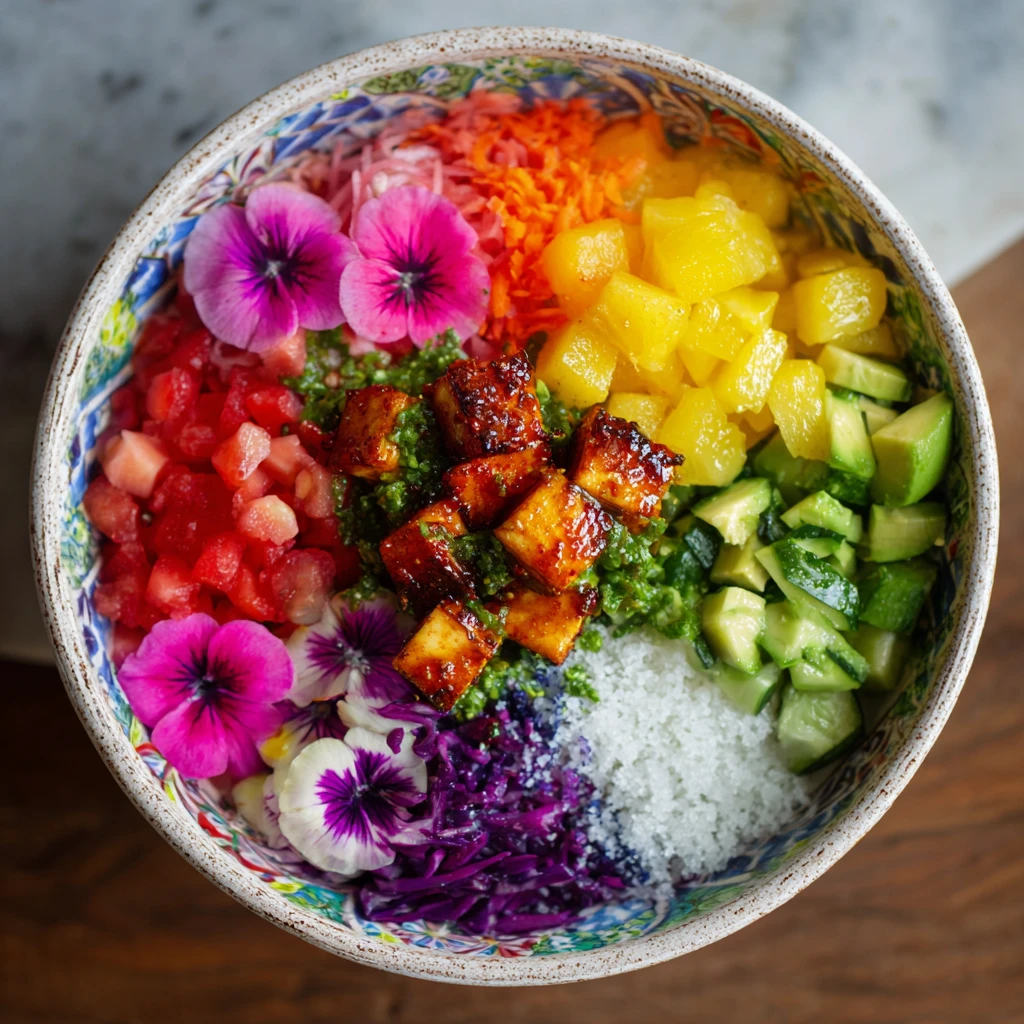
FAQ: Frequently Asked Questions
Q: What makes a meal vibrant?
A: A vibrant meal is visually appealing and offers a complex flavor profile. This can be achieved through color, texture, and flavor combinations.
Q: How can I add more color to my plate?
A: Incorporate a variety of colorful fruits and vegetables, such as bell peppers, tomatoes, spinach, berries, and carrots. Consider colorful grains and proteins like quinoa and salmon.
Q: What are some easy ways to improve the presentation of my food?
A: Try stacking ingredients to add height, garnishing with fresh herbs, drizzling sauces artfully, and leaving some empty space on the plate for visual appeal.
Q: How important is texture in a vibrant meal?
A: Texture is crucial for a satisfying eating experience. Combining crunchy, soft, and smooth elements creates a more dynamic dish.
Q: How can I balance flavors in my meals?
A: Aim to incorporate a combination of the five basic tastes: sweet, sour, salty, bitter, and umami. Experiment with herbs, spices, and other flavor enhancers.
Q: What are some simple swaps I can make to increase the vibrancy of my meals?
A: Add fresh herbs, use colorful vegetables as a side dish, sprinkle toasted nuts and seeds, add a drizzle of creamy sauce, and garnish your meals.
Q: Does vibrant food have more nutrients?
A: While vibrancy doesn’t directly correlate with nutrient density, colorful meals often contain a wider variety of nutrients due to the inclusion of diverse fruits and vegetables.
